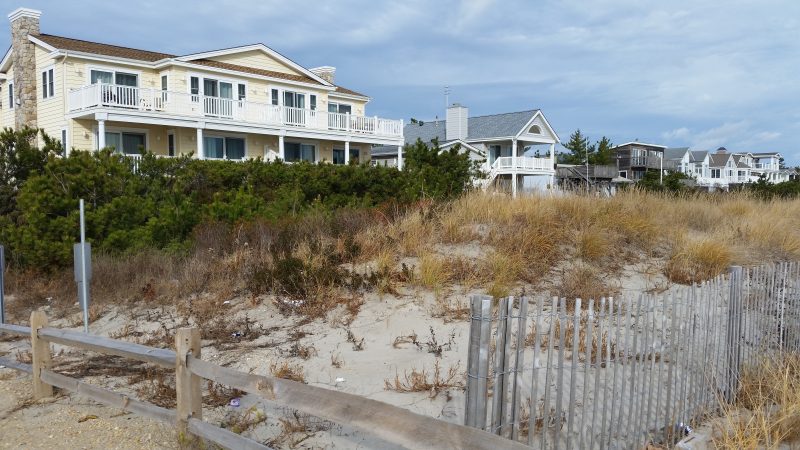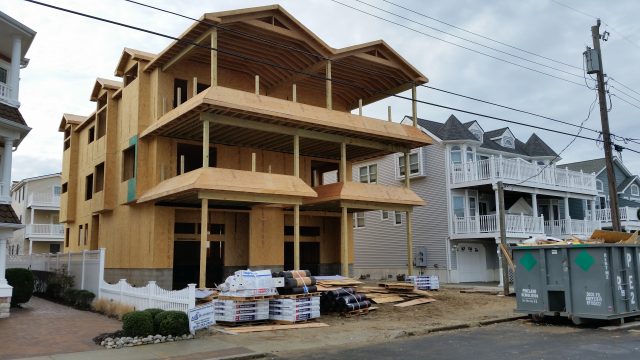By Donald Wittkowski
Sea Isle City plans to increase the fees it charges for construction permits and building inspections for the first time in more than 10 years to help pay for operating costs in the municipal office that provides those services.
In a first step, City Council voted 4-0 Tuesday to introduce an ordinance that authorizes the higher fees. Councilman Frank Edwardi was absent from the meeting. A public hearing and final vote to adopt the ordinance are scheduled for the Jan. 24 Council meeting at 10 a.m. in City Hall.
City Business Administrator George Savastano told Council that the higher fees will generate extra revenue to help cover the operating costs for Sea Isle’s construction office. Ideally, the office would pay for itself, but is “far below that,” he added.
Savastano did not disclose the amount of the construction office’s operating deficit during the Council meeting. Councilman Jack Gibson asked Savastano to put together a report on the office’s expenses and revenue for the past few years.
“I’m surprised that we’re not collecting more in fees than the office is costing us,” Gibson said.
Savastano explained that the city has not increased the construction and inspection fees since about 2004 – or, as he put it, for “an awful long time.”
Sea Isle is close to the middle of the pack among Cape May County municipalities for those fees, but is nowhere near the higher levels the state would allow it to charge under the New Jersey Uniform Construction Code, he noted.
“We are not going to those levels,” Savastano said, comparing the city’s proposed increase to New Jersey’s fee structure. “But we are raising them to try to get closer to our expenditures and to be in line with the rest of the construction community.”
For new construction projects, the permit fee would increase to $.0325 per cubic foot of building space, up from $.0270.
For renovations, alterations and repairs, the base fee would increase to $29 per $1,000 of construction work, up from $24. Additional fees would be charged on an escalating scale for renovation and repair projects costing more than $50,000, according to the ordinance.
The same ordinance also included a dune survey fee for construction projects on beachfront property. However, Council removed the “dune line determination” fee from the ordinance Tuesday and will consider it separately at a later time.
Currently, the dune survey fee is $425. Before it was struck from the ordinance, the new fee would have increased to $600.

Sea Isle requires beachfront property owners to pay for a city survey of the dune line to prevent them from building projects that would disturb a critical storm barrier. The dune network helps to protect the island community from flooding unleashed by coastal storms.
Council agreed to remove the proposed increase in the dune survey fee after Gibson raised objections. Gibson argued that it is no longer necessary for property owners to have surveys done because of the city’s massive beach replenishment project completed by the U.S. Army Corps of Engineers in the last two years. He said the dune line is clearly delineated by the beach replenishment project.
“I think it’s an unnecessary hardship, really,” Gibson said of the survey fee.
“I would agree with you,” Savastano told Gibson.
Councilwoman Mary Tighe questioned, though, whether the dune system might be harmed if the surveys were eliminated. She fears that beachfront property owners may ignore the setback requirements that prevent them from building within the dune system.
“If we eliminate that, how would we know what the setback would be from the dunes?” Tighe asked Gibson. “They would build right up to the dunes if they could. I’m sure they would.”
Gibson responded to Tighe by saying that the beach replenishment project has created a wide dune system – in some cases as much as 100 feet – in front of the beachfront homes. He said he believes the dune line should start where the private property ends.
“The appropriate line, in all fairness to those property owners, should be where their property ends, and that’s where the setback ought to be,” Gibson said.








